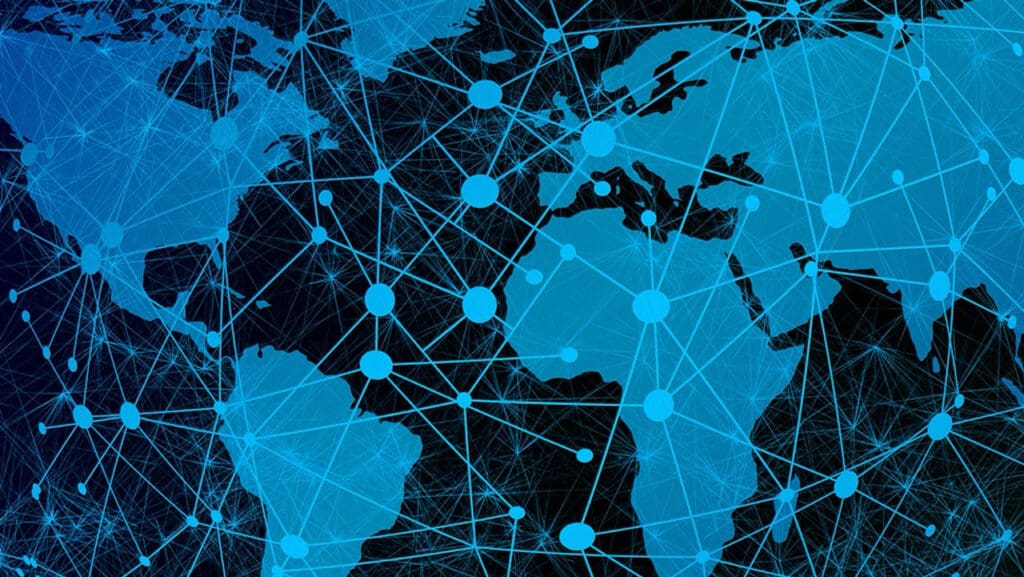The world of connectivity and telecommunications is constantly evolving, driven by technological advancements that shape the way we communicate and access information. In 2023, we saw a surge in the use of Generative Artificial Intelligence (GAI). While AI concepts have been quietly deployed and tested in some business and technology settings for several years, they took center stage with the launch of consumer-focused GAI platforms by multiple major technology companies. These new platforms grew enormously popular at an unprecedented speed, collectively reaching hundreds of millions of active users within the span of a few months.
The future of telecommunications is not just about connectivity, but also about delivering personalized experiences, driving business growth, and contributing to a sustainable and connected world. In 2024, we will see even more advancement with dramatic impact on connectivity. Most discussions about technology trends such as AI, hybrid quantum, and others, are focused on gaining more speed, improving efficiencies, and creating deeper user experiences.
Generative Artificial Intelligence
Generative Artificial Intelligence (GAI) is a field that has gained significant traction in the last two years, strongly backed by major industry players. GAI systems can create new content, such as text, images, or even voice, similar to content created by humans. While GAI brings many benefits, it also brings significant challenges, including ensuring its use as a tool for support rather than potential harm. In addition, concerns about using the technology to replace humans in the workforce continue to surface. GAI holds immense potential for improving user experiences and network management across most industries, including the telecommunications sector and its customer support. Chatbots powered by GAI can provide quick and accurate responses to customer queries, improving the overall user experience.
These AI-driven chatbots can understand natural language and manage a wide range of customer issues, from billing inquiries to troubleshooting network problems. AI can also be employed to optimize network performance, analyzing vast amounts of data to predict network congestion and proactively adjust resources to ensure a seamless user experience. This predictive maintenance can lead to reduced downtime and improved reliability.
Hybrid Quantum Computing
Quantum computing is a groundbreaking technology that promises to solve complex problems faster than typical computers and is poised to bring significant advancements, particularly in network optimization. While AI has already made a consequential global impact, the addition of quantum computing can make it soar. Together, these tools could bring about an AI revolution without precedent.
In 2024 we expect to see quantum computing transition from physical quantum bits to error-correcting logical qubits, and global collaboration in quantum research increasing.
A hybrid quantum computing system is a system that combines elements of quantum computing with the classical computers we know and already exist. By working together, quantum and classical computers can perform functions that are difficult or even impossible for classical computers to perform on their own, while at the same time allowing users to transmit the results of quantum computations through classical systems.
Quantum computing can tackle complex optimization problems that are beyond the capabilities of classical computers alone. Telecom companies can use quantum algorithms to optimize network routing, resource allocation, and traffic management, leading to more efficient and reliable networks.
The IEEE SA Industry Connections (IC) Program aims to address the emerging need for a standardized framework for a Hybrid Quantum-Inspired Internet Protocol. With the rapid advancements in quantum technologies and the growing demand for enhanced internet security, scalability, and efficiency, there is a pressing need to establish a coherent and standardized protocol that bridges the gap between conventional internet protocols and quantum-inspired technologies.
Data Centricity
Data Centricity as a term is relatively new but the concept has been around for generations. It allows organizations to eliminate data silos, simplify data management, and expedite application development because teams work within a framework that encompasses data and applications. In 2024, we will see more use cases allowing the user to be in control.
Decentralized, distributed, and heterogeneous systems are the wave of the future. Effective cyber security implementations therefore must create a data boundary to enable safety for people. They also must incorporate more transparency so that verification processes can be developed that will lead to self-healing systems.
From a human-centric point of view, users should be able to control their own personal data, so they know what they are sharing and with whom. People should be able to delete their data from systems (with appropriate checks and balances), and they should own their identifiers or credentials, issued to them from various parties, such as for passports. Because this information is private, plans need to evolve to share only the bare minimum information with smart devices, sites, and services.
Internet of Things (IoT), desktops, edge devices, and AI each have specific needs for cybersecurity. Regarding AI, explorations will encompass data collection, the composition of data sets, the AI/human interface, and the execution/runtime of AI programs. Though GAI is a powerful tool, there is still a potential for toxicity and hallucination, so extra steps need to be taken to make sure that input data is kept private and that the outputs remain accurate.
The effects of new and developing technologies such as quantum computing, Web 3.0, and 5G/6G wireless communications on current and future cybersecurity architectures are being explored.
Sustainable Network Solutions
While the global pandemic triggered a rapid increase in the use of digital communications, demand and energy use has continued to rise, pushing carbon dioxide (CO2) emissions to unprecedented levels. Although the telecommunications sector continues to make strides, there is an urgent need to identify and deploy more sustainable solutions.
Connectivity and communication systems play a significant role in achieving sustainability goals. In its Vision 2030 Sustainable Development Goals (SDGs), the United Nations declares that access to the internet is a fundamental human right and that all people on Earth should have affordable access to the internet. More sustainable telecom solutions, such as solar-powered cell towers and other infrastructure innovations, will help achieve the goal of bringing internet connectivity to more rural and remote areas across the globe.
Currently, work in the IEEE SA Industry Connections Program, Sustainability for Connectivity and Telecom, focuses on developing requirements, frameworks, best practices, guidance, and supporting techniques and tools related to the achievement of sustainable development, with an eye toward smartness and resilience across communities.
In conjunction with this work, IEEE SA engages industry experts to develop ideas and recommendations that can result in standards, best practices, and technical reports for telecommunications equipment and environments in the areas of deployment, energy efficiency, environmental impacts (including health and safety), power, and protection. These work products will help enable vendors, operators, and their customers to deploy and operate dependable, environmentally conscious communications and computing technologies.
Get Engaged with IEEE SA
In 2024 and beyond, IEEE SA will see continued technological evolutions leading toward our efforts to bring and improve connectivity to everyone, everywhere.
With a full ecosystem of products, programs, and services, IEEE SA works across industries and sectors to drive worldwide participation and champion the benefits of open standards and solutions, accelerating their adoption and the advancement of technology.
Participants not only have the opportunity to shape the future of technology but have attested to improving their careers through active learning and participation in the IEEE SA Standards Development program.








